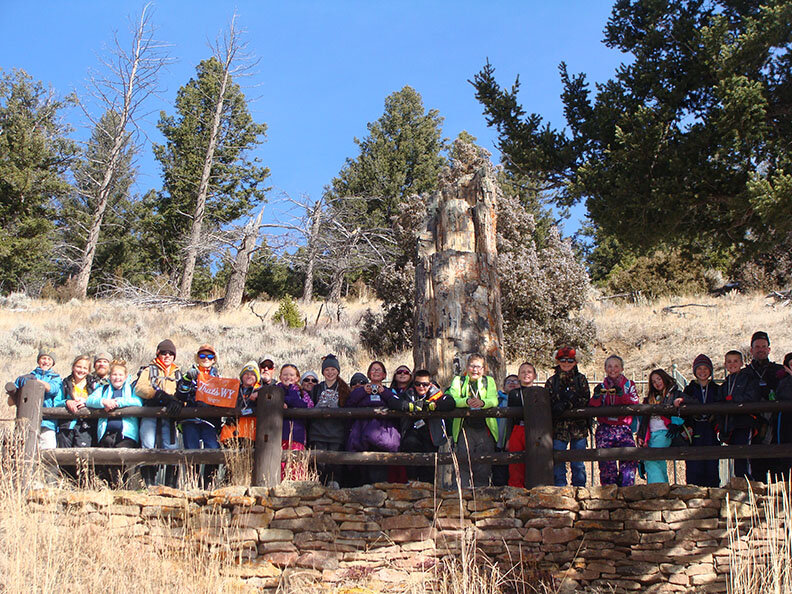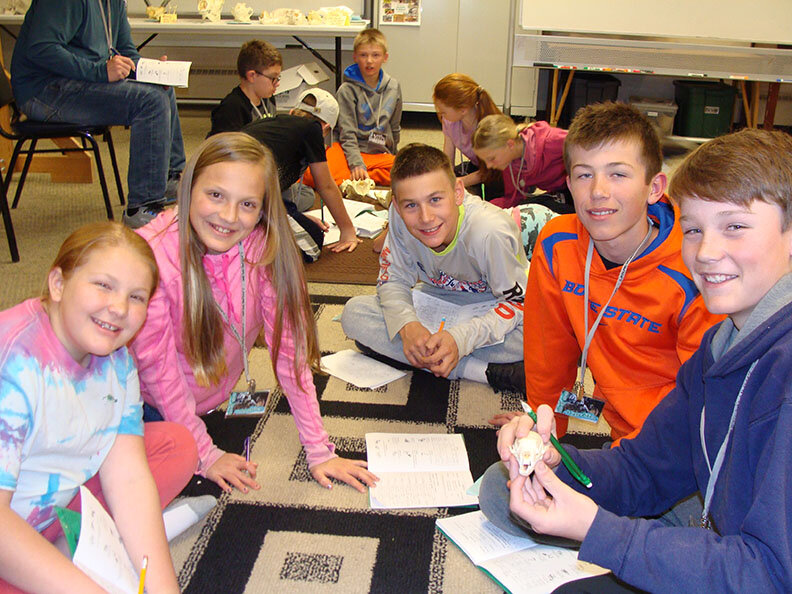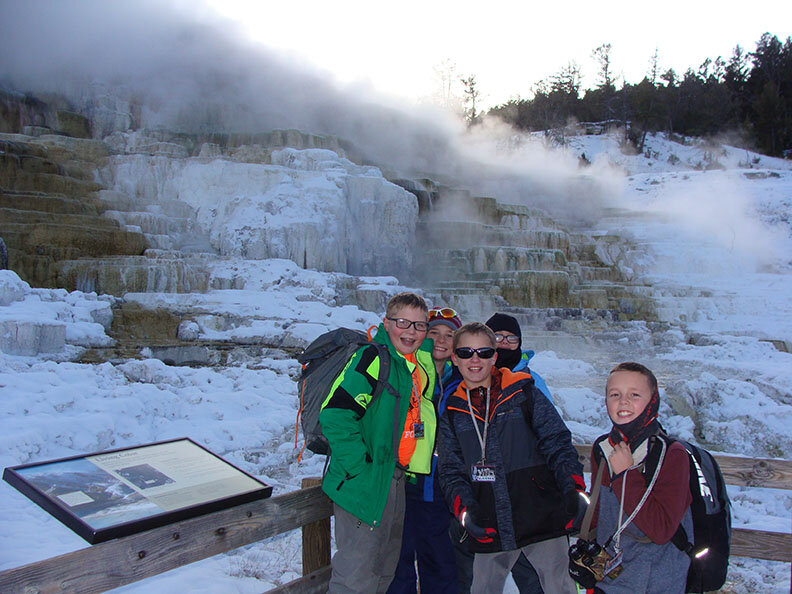We would like to thank all the people who helped us go to Expedition Yellowstone! We had parents and faculty that helped with fundraisers and chaperoning and the support of a great principal. We would also like to thank Ranger Michael and Ranger Matt for the great way they taught us. We are lucky to do this trip!
This item is available in full to subscribers.
To continue reading, you will need to either log in to your subscriber account, or purchase a new subscription.
If you are a current print subscriber, you can set up a free website account and connect your subscription to it by clicking here.
If you are a digital subscriber with an active, online-only subscription then you already have an account here. Just reset your password if you've not yet logged in to your account on this new site.
Otherwise, click here to view your options for subscribing.
Please log in to continue |
Our expedition to Yellowstone was full of adventures and learning from November 12 to 16. The first day in Yellowstone we started learning right away. We named things that were a part of Yellowstone and the Ranger would put food dye of different colors into milk. Last he put in stuff called “Yellowstone Magic” into it and all the colors spread out. It was so cool and beautiful. This taught us that it takes all parts of Yellowstone to make the beauty so we need to preserve it.
The time machine was probably our favorite part of the whole trip to Yellowstone. We got to “travel” through Yellowstone when it was just a huge lake, the Ice Age, and other times. The last thing we saw was how Yellowstone is now. When we traveled through time we got to wave our flashlights and we used alien sounds.
On ecology day, Ranger Michael had Brooklyn pump a balloon that was buried in the dirt. As she pumped it up, it pushed dirt out of the way. Eventually it popped, pushing even more dirt out of the way. This was an example of how the caldera in Yellowstone National Park formed.
We also learned about pH in the hot springs. When we were testing the pH, we used little sticks that when we dipped in water, they would turn a certain color. We held up a card to the stick and matched the colors. We also used temperature guns to find out how hot the springs were. When we did that, we would hold up another card and use the pH number, the temperature and the colors of the hot springs to find out what bacteria lives there.

Finding out what kind of skull you are holding in your hand is very interesting. You learn different kinds of aspects about animals, like how to tell if they have good jaw power, good hearing, good sense of smell, what kind of teeth they have and whether it was a predator or prey. We even got good enough to figure out what animal the skull belonged to.
On Ecology Day we learned how big a beaver’s teeth are and how many layers of fur they have. What made this learning fun was that one of our friends dressed up like a beaver and we learned about the beaver’s adaptations. Then we made new types of animals based on a habitat and three adaptations. We had to draw cards for our different adaptations and make it have what those cards said. We got to imagine it, then make and design it.

That day we hiked on the Lost Lake Trail. It was super fun, because we would stop and do a ton of fun activities. Some of the activities that we did were look at some tracks and find out what type they were. Another activity was when we pretended to be elk and wolves. We would go back and forth between being an elk and a habitat. In order to become habitat, you would have to be tagged by a wolf, or not be able to find resources. If you have never been on the Lost Lake Trail in Mammoth Hot Springs you should really go sometime, and if you have been, go again because it is beautiful.
When we were looking for tracks, we found bison fur in a branch. We were thinking that when a bison was walking down the trail, he had an itch so he probably came over to the branch and tried to scratch it. About an hour later we watched a bison just 75 feet ahead of us on the trail do exactly that. It was so funny.
Have you ever wondered what the difference is between trees? Well we learned it’s a Lodgepole pine when two needles are in a bundle, all pine needles are in bundles. Do you know how to identify a Douglas fir? Well it’s easy. The needles will be flat. All you have to do to identify an Engelmann Spruce is grab a needle and rub it in between your fingers and it will roll easy. A Limber Pine is similar to a white bark Pine but it is usually below 7,000 feet. We learned a lot.
For Human History Day we looked at the buffalo box, which had parts of a buffalo. Native Americans used all parts of the buffalo. An example is the tail. This was used as a whip or a fly swatter, or the bladder as a bottle. It was fun to learn about the different parts of the buffalo.
On Thursday we had lessons about human history in Yellowstone and had a fun story lesson about Ed Howell. He was a famous bison poacher in Yellowstone that helped put the Lacey Act into existence because he got caught and the people wanted a real punishment for him and all poachers. Ed Howell joined the military after jail because a trusted townsperson said that he would know all the bad people out in Yellowstone. After the Ed Howell incident, people called it “the most fortunate thing that happened in Yellowstone,” because it started the Lacy Act.
Next, we did a human history timeline and noticed how Yellowstone has changed and what things happened in what years. Some examples are: Yellowstone was established in 1872, the Hayden expedition was in 1871, and 2018 was the Warner expedition (the Cokeville 6th grade expedition).
On our first hike on Thursday, we talked about Thomas Moran, who was the first famed artist to go to Yellowstone. He drew lovely pictures of Yellowstone that were shared to convince congress that Yellowstone was worth saving. Then we got to sit on a hillside and draw out what we saw, then show our artwork like we were Thomas Moran.
While hiking on the Beaver Pond Trail, we came across a wickiup. We learned a few facts about the wickiup and the Sheepeater Indians that built these kinds of structures. We talked about what a normal day was for a Sheepeater Indian, and then wrote an imagined story of our life as a Native American. We also stopped and talked about camouflage. After we were done talking, we played a game using camouflage. The prey was in the middle and the predators were hiding all around the prey. The prey tried to find the predators and get them out. There were three rounds and the closest predator around the prey was the winner.
Next we went to the visitor center to learn more about Yellowstone. You can see how tall you are compared to a bison, look at all kinds of animals, artifacts and videos. When the Calvary was in charge of Yellowstone, they lived at Mammoth Hot Spring. When our class finished in the museum we looked around the fort. While looking around we saw where the Calvary lived. There were barracks, a club to go to for entertainment, a jail and small houses for the important people.

Our next tour was of the Calvary shooting range. Some of the best marksmen could shoot four-hundred yards. When we were on the hill where the targets were, we found bullets from when the Calvary was there. The Calvary would go up to the hill and find bullets to melt down to make new bullets. On the hike we had a radio collar that we got to track. You twisted in a full circle and wherever the loudest beeping was, you would walk 75 steps in that direction. We did the process over again until we found the wolf radio collar.
The last night we had a campfire ceremony. At the ceremony, each clan acted out a legend that they had written.
When we were done with our legends, we passed a bison horn around the circle and took turns saying what we liked or had learned in the five days we had been there. We passed the horn twice, then put out the campfire. That was the end of our amazing adventures.
We would like to thank all the people who helped us go to Expedition Yellowstone! We had parents and faculty that helped with fundraisers and chaperoning and the support of a great principal. We would also like to thank Ranger Michael and Ranger Matt for the great way they taught us. We are lucky to do this trip!